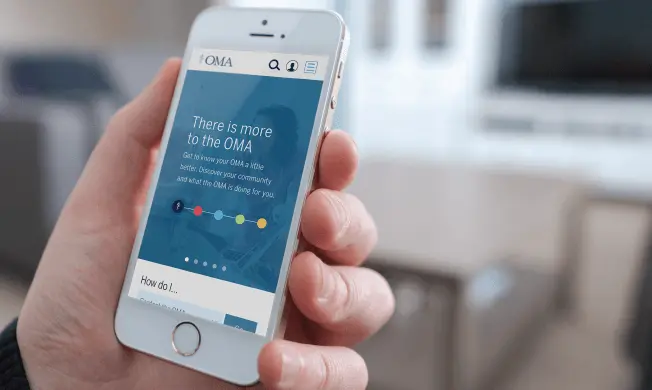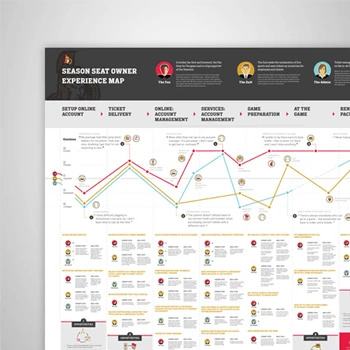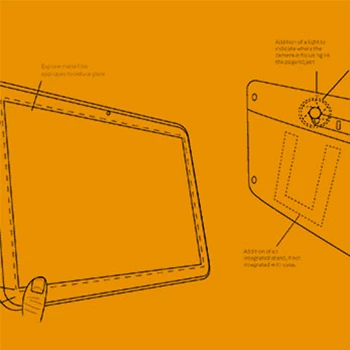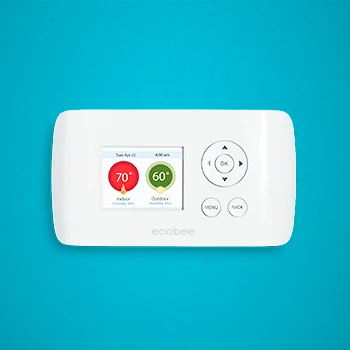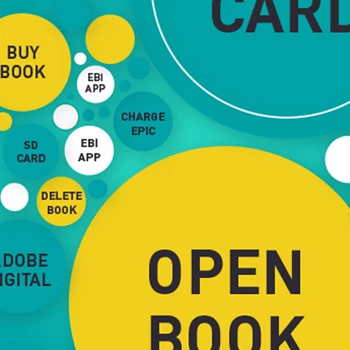What is digital product design and how does it differ from UI design?
Digital product design encompasses the entire user experience from initial discovery through ongoing usage, while UI design focuses primarily on visual interface elements. Our approach integrates user research, interaction design, visual design, and usability testing to create products that solve real user problems and deliver business value.
Tip: Look for product design approaches that start with user research and business goals rather than jumping directly into interface design to ensure products solve actual problems.
How does Experience Thinking apply to digital product design?
Experience Thinking provides our framework for creating connected product experiences that integrate with brand, content, and service touchpoints. Rather than designing products in isolation, we ensure your digital product reinforces your overall brand promise and connects seamlessly with other customer experience elements.
Tip: Consider how your digital product will integrate with your broader customer journey and ensure design decisions support your overall brand experience strategy.
What types of digital products do you design?
We design web applications, mobile apps, software platforms, SaaS products, e-commerce solutions, and digital services across industries including technology, energy, media, healthcare, and financial services. Our approach scales from simple tools to complex enterprise software systems.
Tip: Choose design partners with proven experience in your industry and product complexity level to benefit from domain knowledge and relevant design patterns.
What's your approach to balancing user needs with business requirements?
We use Experience Thinking to find solutions that serve both user needs and business goals through collaborative workshops, user research, and iterative design validation. Our approach treats user satisfaction and business success as complementary rather than competing objectives.
Tip: Establish clear success criteria for both user experience and business outcomes early in the project to ensure design decisions can be evaluated against both dimensions.
How do you handle product design for different user expertise levels?
We conduct user segmentation research to understand different user groups' domain knowledge, cognitive abilities, and accessibility needs. Our designs accommodate varying expertise levels through progressive disclosure, adaptive interfaces, and clear navigation paths that work for both novice and expert users.
Tip: Identify your product's primary user personas early and prioritize design decisions that serve your most critical user segments while accommodating secondary users.
What role does competitive analysis play in your product design process?
Competitive analysis informs our design strategy by identifying market opportunities, understanding user expectations, and revealing differentiation possibilities. We analyze both direct competitors and products from adjacent industries to understand broader design patterns and innovation opportunities.
Tip: Focus competitive analysis on understanding user expectations and identifying opportunities for differentiation rather than simply copying existing solutions.
How do you approach product design for global markets?
Global product design requires understanding cultural differences, language considerations, technical constraints, and varying user behaviors across markets. We design flexible frameworks that maintain core functionality while allowing for localization and cultural adaptation.
Tip: Plan for globalization from the beginning of the design process rather than trying to adapt domestically-focused designs later, as this approach typically yields better results and lower costs.
What research methods do you use for digital product design?
We employ ethnographic approaches, contextual inquiry, user interviews, task analysis, job shadowing, surveys, and analytics analysis to understand how users interact with information and complete tasks. Our research emphasizes understanding usability and usefulness rather than just attitudes and preferences.
Tip: Prioritize observational research methods over surveys and interviews alone to understand what users actually do versus what they say they do.
How do you conduct user research for products that don't exist yet?
For innovative products, we research the problem space through ethnographic studies, analyze existing workflows and pain points, and test early concepts through prototype validation. We focus on understanding user needs and contexts that the new product aims to address rather than testing specific features.
Tip: Invest heavily in problem validation before solution design when creating innovative products to ensure you're solving real user problems worth solving.
What's your approach to creating user personas and user stories?
We develop research-based personas through user interviews, behavioral analysis, and task observation rather than demographic assumptions. User stories emerge from understanding specific usage scenarios and are written at a level that enables design decisions and development prioritization.
Tip: Base personas on behavioral patterns and goals rather than demographic characteristics to create more actionable design guidance and avoid stereotyping.
How do you validate product concepts before full design development?
We create low-fidelity prototypes, conduct concept testing with target users, and validate assumptions through user interviews and task analysis. This approach helps de-risk product investments by confirming user value before committing significant design and development resources.
Tip: Test product concepts with realistic tasks and scenarios rather than abstract presentations to get more accurate feedback about actual user behavior and adoption likelihood.
What role does data analytics play in your product design decisions?
Analytics provide quantitative insights into user behavior patterns, feature usage, and performance metrics that complement qualitative research findings. We use analytics to identify areas for improvement, validate design hypotheses, and measure the impact of design changes on user behavior.
Tip: Combine analytics data with qualitative research to understand not just what users do, but why they behave in certain ways and how to improve their experiences.
How do you research complex B2B products with multiple user types?
B2B product research involves understanding different user roles, decision-making processes, and organizational contexts. We conduct stakeholder interviews, workflow analysis, and role-based usability testing to design experiences that serve various user types within the same organization.
Tip: Map the complete user ecosystem within target organizations to understand how different roles interact with your product and influence each other's experiences.
What's your approach to continuous user research throughout product development?
We establish research rhythms that include regular user feedback collection, usability testing at key development milestones, and ongoing user behavior monitoring. This continuous approach enables rapid iteration and ensures products stay aligned with user needs as they evolve.
Tip: Build user research into your development process as a regular activity rather than a one-time project phase to enable continuous learning and improvement.
What's your end-to-end digital product design process?
Our Experience Thinking process includes four phases: innovation (opportunity discovery and concept validation), strategy (user research and product planning), design (interaction and visual design), and build (implementation support and testing). Each phase builds on previous insights to create user-centered products.
Tip: Ensure your design process includes validation points at each phase rather than waiting until the end to test with users, as early feedback prevents costly late-stage changes.
How do you approach information architecture for complex products?
Information architecture begins with understanding user mental models through card sorting, tree testing, and task analysis. We create navigation structures and content organization that match how users naturally categorize and search for information while supporting business goals and technical constraints.
Tip: Test information architecture concepts with realistic content and tasks rather than abstract categories to ensure the structure works when users have specific goals.
What's your approach to interaction design and user flow creation?
Interaction design focuses on creating intuitive navigation, clear manipulation of interface elements, and smooth task completion flows. We design interactions that accommodate different user expertise levels while maintaining consistency and reducing cognitive load throughout the product experience.
Tip: Design interaction patterns that can scale across your product rather than creating unique interactions for each feature to maintain consistency and reduce user learning curves.
How do you handle visual design and brand integration?
Visual design reinforces brand experience while supporting usability and accessibility requirements. We create design systems that maintain brand consistency across all product touchpoints while ensuring visual elements enhance rather than hinder user task completion.
Tip: Establish clear hierarchy between brand expression and functional usability early in the design process to avoid conflicts between aesthetic and usability goals.
What's your approach to responsive and multi-device design?
We design device-agnostic experiences that adapt to different screen sizes, input methods, and usage contexts. Our approach prioritizes core functionality across all devices while optimizing interactions for specific platform strengths and user expectations.
Tip: Define core user tasks that must work excellently across all devices before adding device-specific features to ensure consistent value delivery.
How do you ensure accessibility in digital product design?
Accessibility is integrated throughout our design process through inclusive design principles, WCAG compliance, assistive technology testing, and diverse user testing. We create products that work for users with varying abilities while maintaining excellent experiences for all users.
Tip: Include accessibility requirements in your initial design criteria rather than retrofitting later, as this approach typically results in better solutions for all users.
What role do design systems play in your product design approach?
Design systems provide consistent components, patterns, and guidelines that scale across product features and development cycles. We create systems that balance consistency with flexibility, enabling rapid development while maintaining design quality and user experience coherence.
Tip: Start building design system components as soon as you have validated design patterns rather than waiting until after product launch to systematize your design decisions.
What prototyping approaches do you use for different project phases?
We use low-fidelity prototypes for early concept validation, medium-fidelity prototypes for user testing and stakeholder review, and high-fidelity prototypes for final validation and development handoff. Prototype fidelity matches the questions we need to answer at each project stage.
Tip: Match prototype fidelity to your testing goals rather than defaulting to high-fidelity prototypes, as lower-fidelity prototypes often provide better feedback for early-stage design decisions.
How do you conduct usability testing throughout the design process?
Usability testing occurs at multiple project stages using appropriate prototype fidelity and testing methods. We conduct task-based testing with realistic scenarios to identify usability issues, validate design decisions, and ensure products work for target users in realistic contexts.
Tip: Test with realistic tasks and content rather than artificial scenarios to get actionable feedback about how your product will perform in real-world usage situations.
What's your approach to rapid prototyping and design sprints?
We use design sprints, discover sprints, and test sprints depending on project needs and timeline constraints. Our sprint approach can scale from focused 4-5 day sprints to extended runs covering larger product areas, always maintaining collaborative and iterative principles.
Tip: Use design sprints for specific design challenges rather than entire product development to maintain the focused, time-boxed benefits while allowing for proper research and validation.
How do you handle paper prototyping and early-stage testing?
Paper prototyping provides cost-effective early validation for interaction flows, information architecture, and basic usability before digital development. This approach enables rapid iteration and identifies major usability issues when changes are least expensive to implement.
Tip: Embrace paper prototyping for early testing even for digital products, as the low investment enables more experimental approaches and honest feedback from test participants.
What testing methods do you use for complex interaction flows?
Complex interaction testing involves task analysis, workflow walkthroughs, scenario-based testing, and error recovery validation. We test both optimal paths and edge cases to ensure products work reliably across different user approaches and unexpected situations.
Tip: Test error scenarios and edge cases early in the design process rather than focusing only on optimal user paths to create more robust and forgiving product experiences.
How do you measure and validate design success?
Design success measurement includes task completion rates, error rates, time on task, user satisfaction scores, and business metrics like conversion rates and retention. We establish baseline measurements and track improvements throughout the design process.
Tip: Define success metrics before design begins and measure consistently throughout the process rather than trying to establish success criteria after design completion.
What's your approach to A/B testing and design validation?
A/B testing validates specific design hypotheses with quantitative data while qualitative testing provides insights into user behavior and preferences. We combine both approaches to make informed design decisions based on user behavior and feedback.
Tip: Use A/B testing for specific design decisions rather than broad design approaches, and always combine quantitative results with qualitative insights to understand why certain designs perform better.
How do you support development teams during product implementation?
We provide detailed design specifications, component documentation, design system guidelines, and ongoing design support throughout development. Our approach includes regular design reviews, developer collaboration, and quality assurance to ensure final products match intended experiences.
Tip: Plan for ongoing design involvement during development rather than treating design handoff as a one-time event to prevent design drift and maintain user experience quality.
What deliverables do you provide for development handoff?
Development deliverables include annotated wireframes, visual design specifications, interaction guidelines, design systems documentation, prototype demonstrations, and user flow documentation. All deliverables focus on enabling accurate implementation while maintaining design intent.
Tip: Prioritize clear documentation and developer communication over perfect visual deliverables to ensure successful implementation and reduce misinterpretation of design intentions.
How do you handle design changes during development?
Design changes during development are managed through collaborative review processes, impact assessment, and prioritized implementation planning. We balance design improvements with development constraints to maintain project timelines while preserving user experience quality.
Tip: Establish change management processes before development begins to handle inevitable design adjustments efficiently without derailing project timelines or team relationships.
What's your approach to design quality assurance during development?
Design QA includes regular design reviews, implementation testing, and user experience validation throughout development. We ensure final products maintain design integrity while accommodating technical constraints and platform requirements.
Tip: Include design QA as regular sprint activities rather than end-of-project reviews to catch implementation issues early when they're easier and less expensive to fix.
How do you support agile development processes?
In agile environments, we work one sprint ahead of development to provide detailed designs for upcoming features while supporting current sprint implementation. This approach enables developer input on feasibility while maintaining design quality and user experience consistency.
Tip: Establish a rhythm where design work stays consistently ahead of development sprints to enable proper user testing and iteration without blocking development progress.
What post-launch support do you provide?
Post-launch support includes user feedback analysis, usability issue identification, design optimization recommendations, and ongoing user research to guide product evolution. We help organizations build capability for continuous user experience improvement.
Tip: Plan for post-launch user research and optimization from the project beginning rather than treating launch as the end of design involvement to enable continuous improvement.
How do you handle design system maintenance and evolution?
Design system maintenance involves regular component updates, new pattern development, usage guidelines refinement, and cross-product consistency monitoring. We establish governance processes that enable system evolution while maintaining design consistency.
Tip: Assign dedicated resources for design system maintenance rather than treating it as spare-time work to ensure your system evolves appropriately with product needs.
How do you measure the business impact of product design improvements?
Business impact measurement includes user engagement metrics, conversion rate improvements, support cost reduction, development efficiency gains, and customer satisfaction increases. We connect design improvements to business outcomes through systematic measurement and analysis.
Tip: Establish baseline business metrics before design improvements begin to demonstrate clear ROI and justify continued investment in user experience excellence.
What's the typical ROI of investing in professional product design?
Product design ROI varies by industry and product complexity, but organizations typically see 2-5x returns through improved user adoption, reduced support costs, increased customer lifetime value, and faster feature development. Early design investment prevents costly late-stage changes.
Tip: Calculate ROI across multiple dimensions including cost avoidance, revenue increases, and efficiency gains rather than focusing solely on immediate financial returns.
How does good product design impact development efficiency?
Well-designed products reduce development rework, minimize feature changes during development, improve team coordination, and create reusable design patterns. Clear design direction enables faster development cycles and reduces costly implementation mistakes.
Tip: Track development rework and change requests as design quality metrics to demonstrate how upfront design investment reduces downstream development costs.
What competitive advantages does professional product design provide?
Professional product design creates competitive advantages through superior user experiences, faster user adoption, reduced training requirements, improved customer loyalty, and stronger brand differentiation. Great design becomes increasingly difficult for competitors to replicate.
Tip: Focus design differentiation on solving unique user problems rather than surface-level visual differences to create sustainable competitive advantages.
How do you help organizations build internal design capabilities?
We transfer design knowledge through collaborative workshops, documentation, process establishment, and mentoring of internal team members. Our approach builds organizational capability for continued design excellence beyond individual project engagements.
Tip: Invest in building internal design capabilities alongside external design services to create sustainable competitive advantages and reduce long-term consulting dependencies.
What's the impact of poor product design on business outcomes?
Poor product design leads to low user adoption, high support costs, increased development rework, customer churn, negative brand perception, and reduced competitive positioning. The cost of fixing design problems after launch typically exceeds upfront design investment by 10-100x.
Tip: Calculate the cost of poor design including support, rework, and lost opportunities to justify appropriate upfront investment in professional design services.
How do you demonstrate design value to non-design stakeholders?
Design value demonstration uses business language, quantitative metrics, user feedback, competitive comparisons, and clear before/after examples. We connect design decisions to business outcomes and present results in formats that resonate with different stakeholder groups.
Tip: Translate design improvements into business terms and metrics that matter to your stakeholders rather than using design-specific language and measurements.
How do you approach product design for emerging technologies?
Emerging technology design requires understanding new interaction paradigms, user expectations, and technical possibilities while maintaining human-centered design principles. We balance innovation opportunities with proven usability principles to create products that are both cutting-edge and usable.
Tip: Focus on solving real user problems with emerging technologies rather than implementing technology for its own sake to ensure adoption and long-term success.
What's your approach to designing products with AI and machine learning features?
AI-enhanced product design focuses on augmenting human capabilities rather than replacing human judgment. We design transparent AI interactions, provide user control over automated features, ensure graceful error handling, and maintain user trust through explainable AI behaviors and clear value delivery.
Tip: Design AI features to enhance user capabilities and provide clear value while maintaining user agency and understanding rather than creating 'black box' experiences that users can't control or understand.
How do you balance innovation with usability in product design?
Innovation and usability balance requires understanding user mental models, technical feasibility, and business value. We introduce new interaction patterns gradually, provide familiar fallbacks, and test innovative approaches extensively to ensure they improve rather than complicate user experiences.
Tip: Introduce innovative features alongside familiar interaction patterns to give users choice and reduce adoption barriers while encouraging exploration of new capabilities.
What's your approach to designing for voice and conversational interfaces?
Conversational interface design emphasizes natural language understanding, clear conversation flows, error recovery, and multimodal interactions. We design conversations that feel natural while providing clear functionality and maintaining user control over the interaction.
Tip: Design conversational interfaces with clear escape routes and fallback options for when voice interactions fail or users prefer traditional interface elements.
How do you handle data visualization and complex information display?
Data visualization design focuses on clarity, actionability, and progressive disclosure of information complexity. We create visualizations that enable quick understanding while providing drill-down capabilities for detailed analysis, always prioritizing user goals over data completeness.
Tip: Design data visualizations that answer specific user questions rather than displaying all available data to ensure information supports decision-making rather than overwhelming users.
What's your approach to designing for IoT and connected products?
IoT product design requires understanding device ecosystems, connectivity constraints, and cross-device user experiences. We design coherent experiences across multiple touchpoints while accommodating varying device capabilities and connectivity conditions.
Tip: Design IoT experiences that work reliably with intermittent connectivity and provide clear status information to help users understand device states and capabilities.
How do you future-proof product designs for evolving technology?
Future-proofing involves creating flexible design systems, modular interaction patterns, and scalable information architectures. We design products that can evolve with changing technology while maintaining consistent user experiences and core functionality.
Tip: Focus future-proofing efforts on core user workflows and interaction principles rather than specific technology implementations to create adaptable products that remain valuable as technology evolves.

